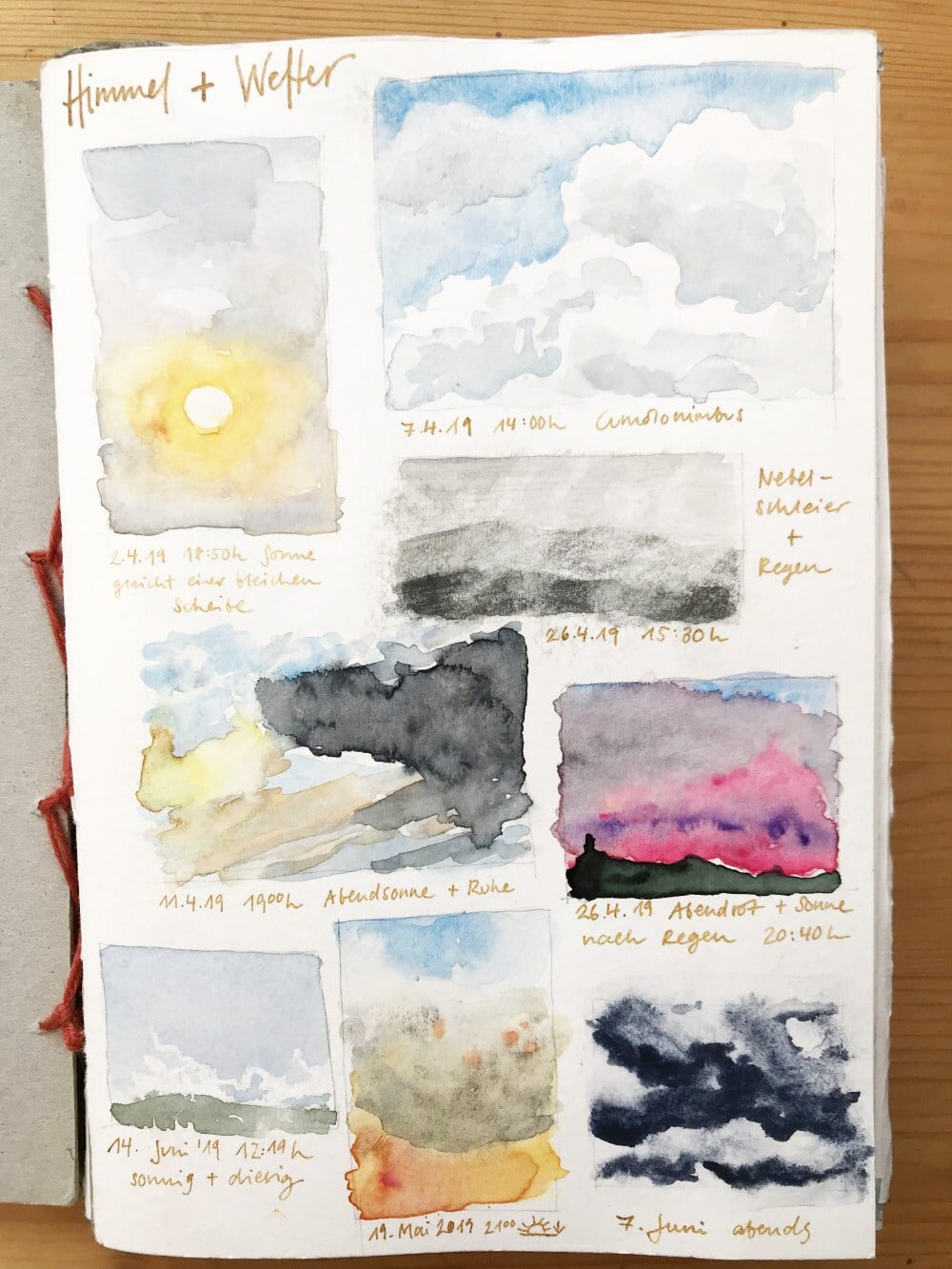One ongoing project I started over a year ago is to document the sky above me on a regular basis. I love gazing into the sky, and I like learning about different weather phenomena by quickly sketching them in graphite and watercolor.
The way I do these sketches is to reserve the first page of my sketchbook for small weather sketches. These are intended to be small thumbnails drawings, just impressions on how the weather looked like on that particular day. This technique has become my favorite way to start a new sketchbook, and I'll tell you why in a second. I keep these sketches really simple: I usually make a few notes (date, time, what's happening). Making a small weather study is a great way to warm up, and I often start my sketching sessions with weather sketches.
This way I fill up the first page bit by bit and I document the weather and sky that I saw when I was using the sketchbook. When I run out of place on the first page, I continue on the last page. This practice gives a wonderful insight on how the sky looks in different seasons, and what colors and weather conditions dominated that time span. Winter light is different from summer light, as you can learn from this kind of perpetual journaling. Weather sketches also train my ability to paint different kind of skies and clouds, which is always helpful, and gives me an excuse to nerd out about clouds.
But the most valuable aspect these small sketches at the beginning of my sketchbook have, is that they take away the fear of having to make a mark into a new sketchbook. I used to be afraid of my sketchbook, especially a new one, because the empty pages felt intimidating, and I didn't want to screw them up. I'm pretty sure this is a feeling every artist has known at one point or another, so there are many great ways to trick yourself around that fear. Nature journaling has definitely helped to liberate me from the perfectionist approach of making great art all the time, but I still felt a bit intimidated at the beginning of a new, pristine sketchbook - so full of potential, but also potentially ruined by my first brushstroke. Since I've decided that the first page of my nature journal will always be reserved for small weather sketches, this fear has vanished. I don't even think about what kind of marks I want to make in a new sketchbook, I simply start and document the sky.
Next time you start a new sketchbook, try out this technique. Obviously you don't have to fill the page with weather sketches, but I find them easy to start with. They work with the simplest of tools - graphite, ink, or watercolor, and the process warms up your drawing hand and familiarizes you with your tools. I typically spend around 5 minutes on one sketch.
Weather sketches are usually not very technically challenging - you lay down a blue or grey sky, and then react to whatever cloud pattern or weather phenomenon you can see. Clouds are very forgiving subjects, they don't have to follow exact forms, and with a few simple tricks you can learn how to paint them pretty easily.
As a small demo, I'd like to show you how to paint two different types of clouds in watercolor. This video will be added to the SKIES page on 6th June 2020.
Julia shares regular updates of her adventures in nature and lots of sketching tips on her blog - juliabausenhardt.com/blog and Youtube channel, and she teaches nature sketching classes online which you can find here.







